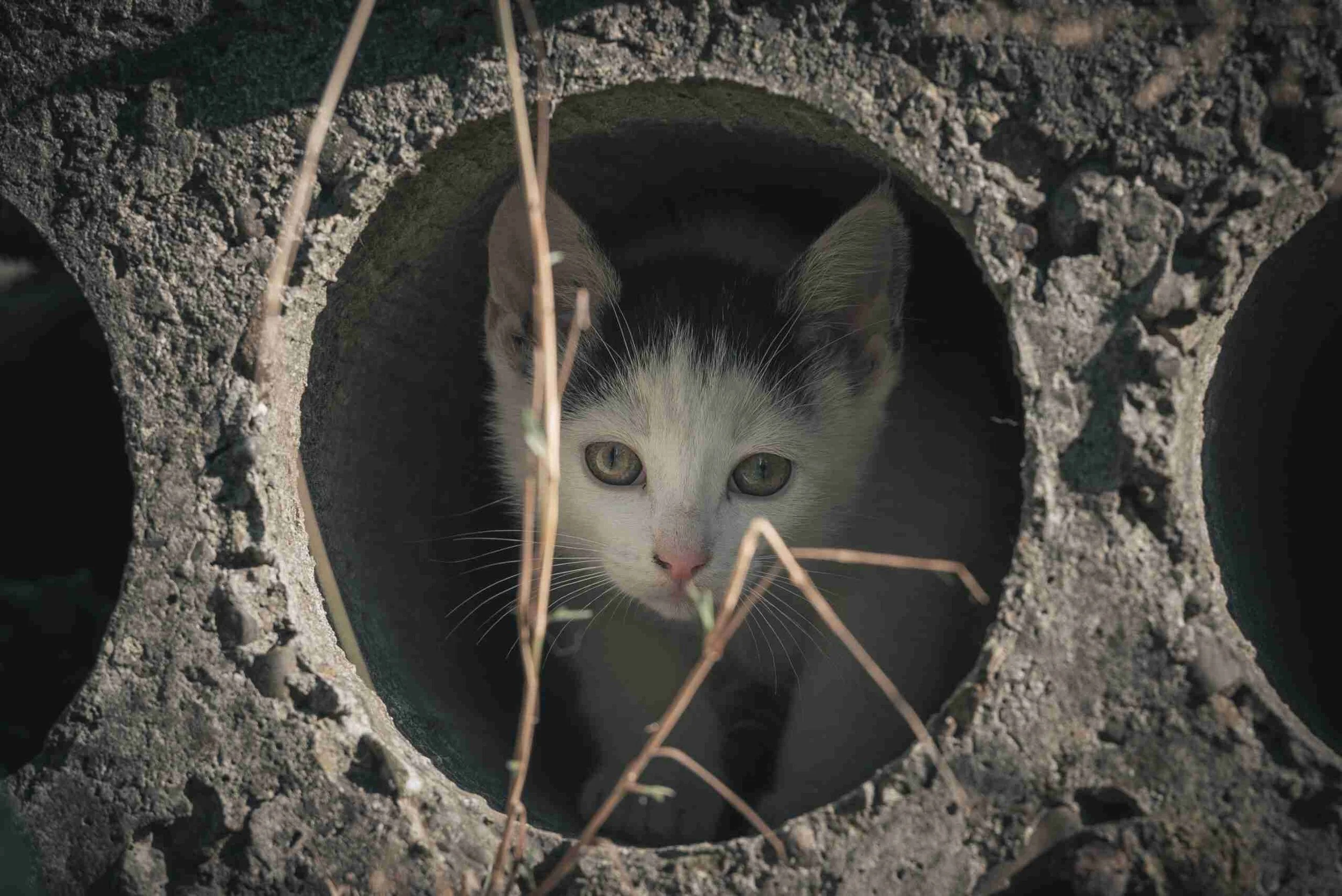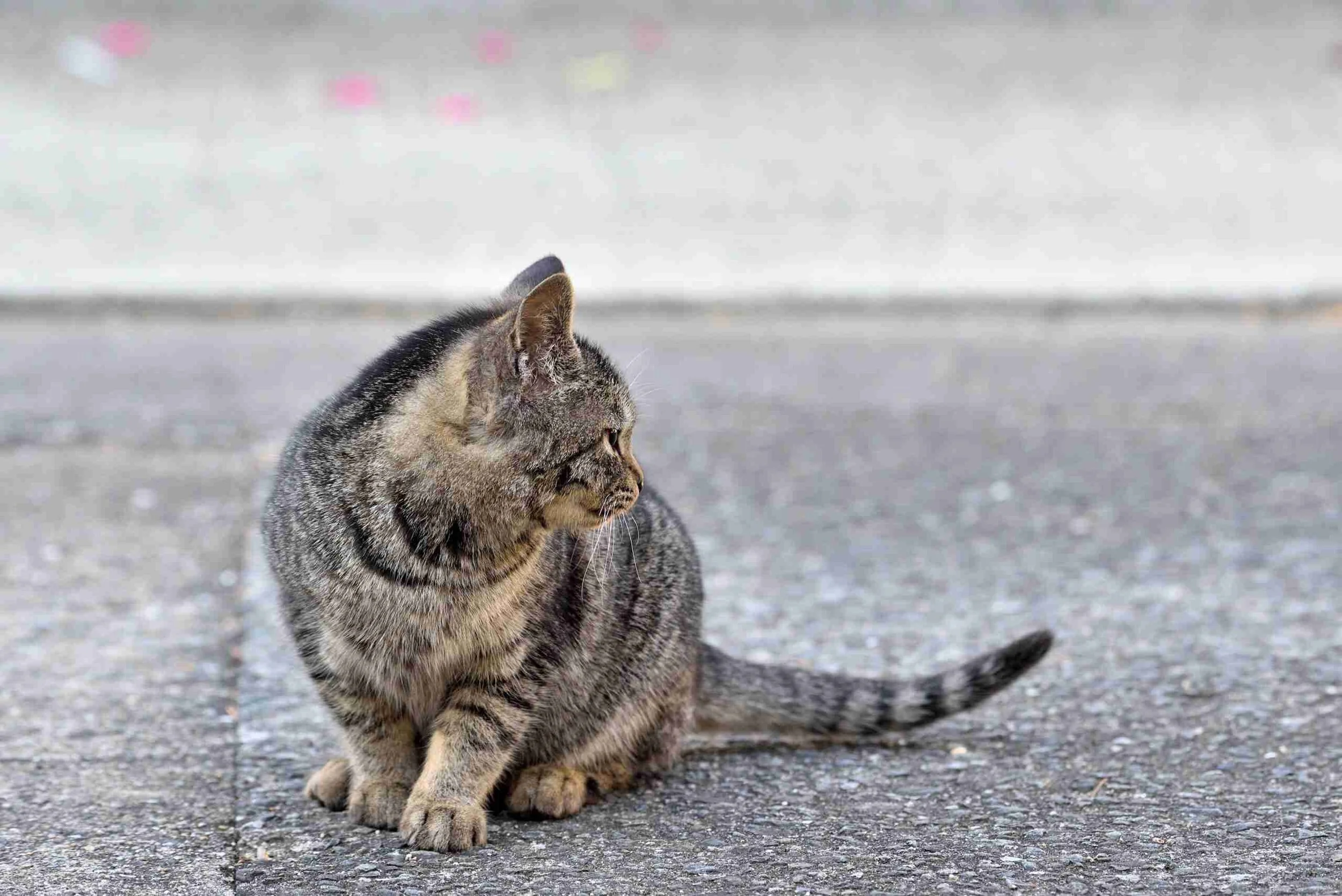What is a Feral Cat?
The term “feral cat” is one of the most misunderstood terms in animal welfare. Some people believe that a feral cat is a wild and dangerous creature that needs to be feared or even shot. Others use the term to describe any homeless outdoor cat. For example, we get calls like this: “There’s a litter of feral kittens under my porch. My kids have been playing with them, and they’re super friendly.” In this case, the kittens are not feral but are stray, homeless, abandoned, or community cats.
Observing a cat will help determine if it’s a stray (formerly a pet) or feral. A stray cat may meow and move like a house cat with its tail up, making eye contact. In contrast, feral cats are usually silent, crouched low to the ground, and will not make eye contact. Strays will be more visible during the daytime hours and may eat near humans. Ferals are typically more nocturnal and will eat food only after humans have retreated. Stray cats may appear dirty and ungroomed. If cornered, a stray cat will try to hide rather than fight. If cornered, a feral cat will hiss, spit, or growl, and is usually not dirty or disheveled. They may have an ear tip if they’ve been through a TNR process.
A feral cat never had contact with people or contact with people diminished over time. Feral cats are generally fearful or wary of people and rarely become lap cats or enjoy living indoors. Successful adoption of feral cats is very rare.
A cat can be feral and not at different points in its life. An outdoor kitten may be born feral and then be socialized and adopted. A pet cat can become homeless and, after living on its own, start to act unsocialized. Feral behavior also varies depending on several factors, including age, generations, contact, and personality.
Age: Kittens born to feral mothers can usually be socialized. After they reach 10-12 weeks old, socialization becomes a more uncertain process with each passing week. An adult feral cat may require years to socialize if at all.
Generations: The more generations that separate a cat born outdoors from her once-socialized ancestor, the wilder that cat will be. In other words, feral behavior will tend to increase with each successive feral generation.
Contact: Cats who regularly interact with people are more likely to show signs of socialization versus cats who have little or no contact.
Personality: Cats have distinct personalities. Some are naturally friendly and will warm up to people more quickly.
Since feral cats are not adoptable, they should not be taken to animal shelters. Learn about caring for feral cats and cat colonies by visiting Alley Cat Allies website or by reaching out to local groups such as Colorado Kat Coalition.
Since 1994, the Animal Resource Center and the Shops of Second Chance Humane Society have been dedicated to serving animals in Southwestern Colorado. Our adoption hours are every day from 11 a.m. to 5:30 p.m. We are located at 177 County Rd 10, Ridgway, CO. You can view our shelter pets and services online at secondchancehumane.org.



